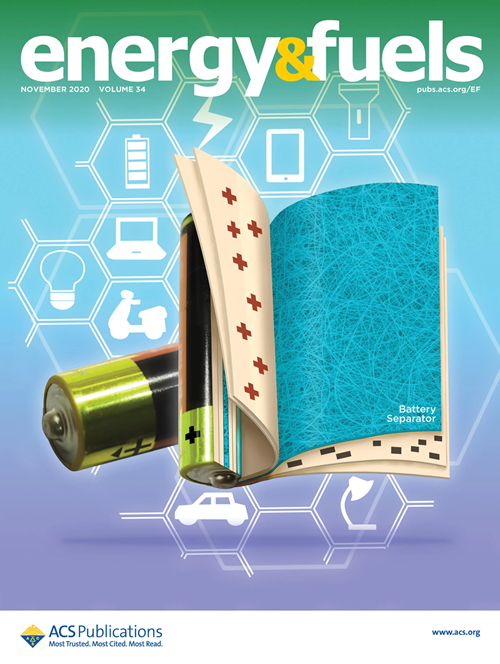二氧化碳同时封存和二氧化碳采收对页岩油层的长期影响相互冲突
IF 5.3
3区 工程技术
Q2 ENERGY & FUELS
引用次数: 0
摘要
注入二氧化碳提高石油采收率(EOR)因其在提高页岩油产量的同时封存二氧化碳的潜力而特别具有吸引力。二氧化碳注入对页岩油层的影响是多方面的,但也是相互矛盾的,而且是长期性的。为了研究页岩油层对二氧化碳注入的反应,我们对含油页岩样本进行了长期二氧化碳暴露实验,该样本包含两个阶段,每个阶段持续 45 天。结果表明,在两个阶段的二氧化碳暴露中,页岩样本有机物中的轻烃和重烃都被二氧化碳持续萃取。无机物显示,在每个二氧化碳暴露阶段之后,碳酸盐减少,石英和粘土矿物增加。粘土矿物增加的原因是形成了埃希石和伊利石。不过,伊利石的形成主要发生在第一阶段。页岩样本中的孔隙和微裂缝因改善和损害效应而发生了改变。改善效应源于碳酸盐溶解,而损害效应则源于颗粒填充和粘土膨胀。在这些相互冲突的效应下,页岩样本的孔隙度和渗透率在每一阶段的二氧化碳暴露后都会增大。第二阶段的渗透率扩大是由于页岩样本上出现了新的可见裂缝。此外,页岩油层对二氧化碳的吸附捕集能力相当可观,长期接触二氧化碳可增强其吸附捕集能力。我们的研究结果有助于更好地了解二氧化碳对页岩油层的长期影响,以便同时进行二氧化碳封存和二氧化碳-EOR。本文章由计算机程序翻译,如有差异,请以英文原文为准。

Conflicting Long-Term CO2 Effects on Shale Oil Formations for Simultaneous CO2 Sequestration and CO2-EOR
Enhanced oil recovery (EOR) with CO2 injection is particularly attractive for its potential to improve shale oil production while simultaneous CO2 sequestration. The effects of CO2 injection on shale oil formations are multiple but also conflicting and long-term scale. To examine the responses of shale oil formations to CO2 injection, we performed long-term CO2 exposure experiments on an oil-bearing shale sample containing two stages, each stage lasting 45 days. The results showed the continuous CO2 extraction of light and heavy hydrocarbons in the organic matter of the shale sample for the two stages of CO2 exposure. The inorganic matter showed a decreased carbonate and increased quartz and clay minerals after each stage of CO2 exposure. The increased clay minerals resulted from the formation of smectite and illite. However, the formation of illite mainly occurred in the first stage. Pores and microfractures in the shale sample were altered by both improvement and impairment effects. The improving effects originated from carbonate dissolution, while the impairment effects originated from particle-filling and clay swelling. Under these conflicting effects, the porosity and permeability of the shale sample were enlarged after each stage of CO2 exposure. The permeability enlargement in the second stage was extraordinary on account of new visible fractures on the shale sample. Additionally, the adsorption trapping capacity of CO2 in shale oil formations is considerable and could be enhanced by long-term CO2 exposure. Our findings contribute to a better understanding of long-term CO2 effects on shale oil formations for simultaneous CO2 sequestration and CO2-EOR.
求助全文
通过发布文献求助,成功后即可免费获取论文全文。
去求助
来源期刊

Energy & Fuels
工程技术-工程:化工
CiteScore
9.20
自引率
13.20%
发文量
1101
审稿时长
2.1 months
期刊介绍:
Energy & Fuels publishes reports of research in the technical area defined by the intersection of the disciplines of chemistry and chemical engineering and the application domain of non-nuclear energy and fuels. This includes research directed at the formation of, exploration for, and production of fossil fuels and biomass; the properties and structure or molecular composition of both raw fuels and refined products; the chemistry involved in the processing and utilization of fuels; fuel cells and their applications; and the analytical and instrumental techniques used in investigations of the foregoing areas.
 求助内容:
求助内容: 应助结果提醒方式:
应助结果提醒方式:


